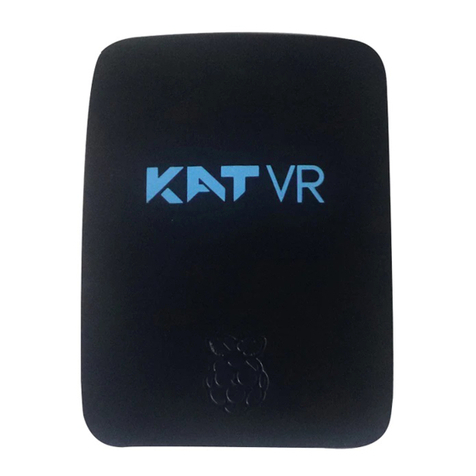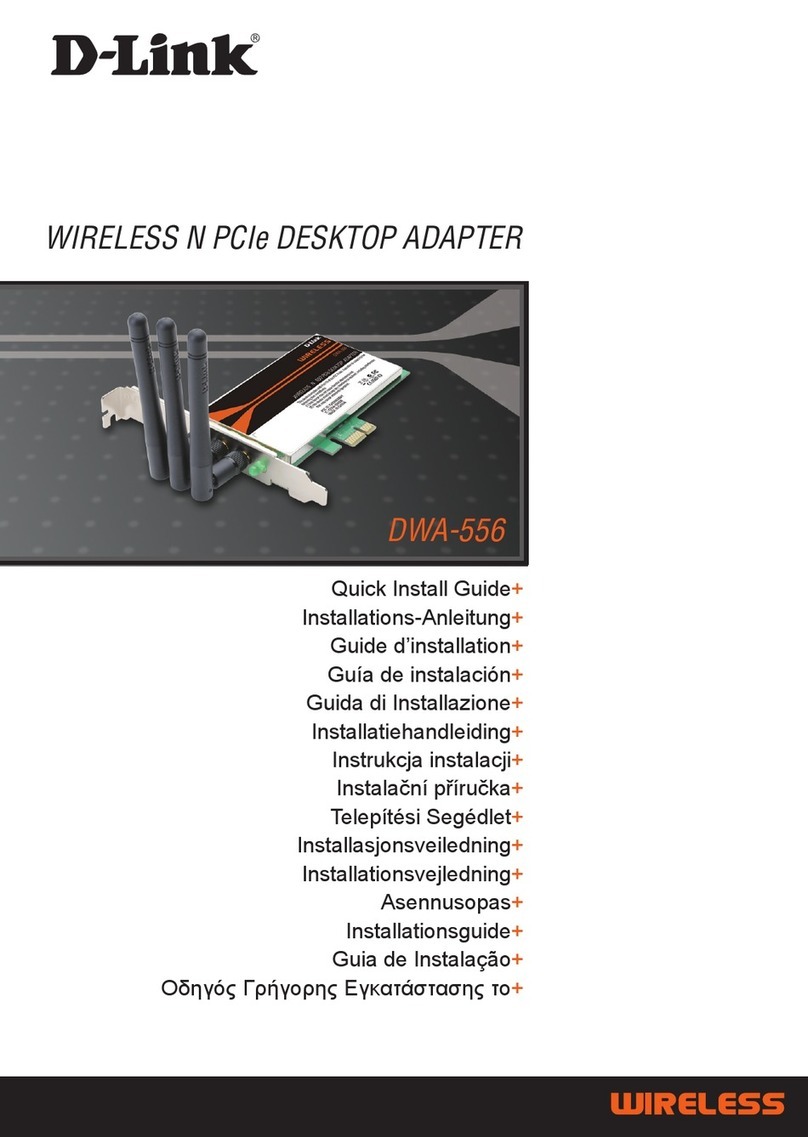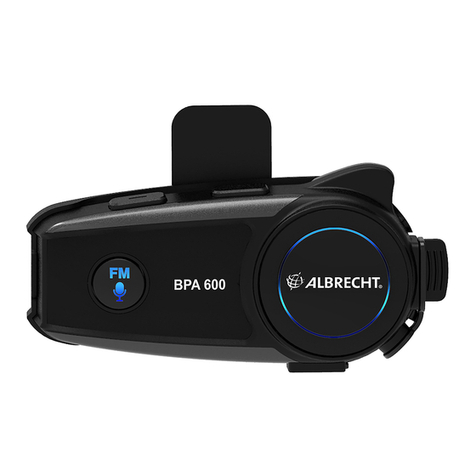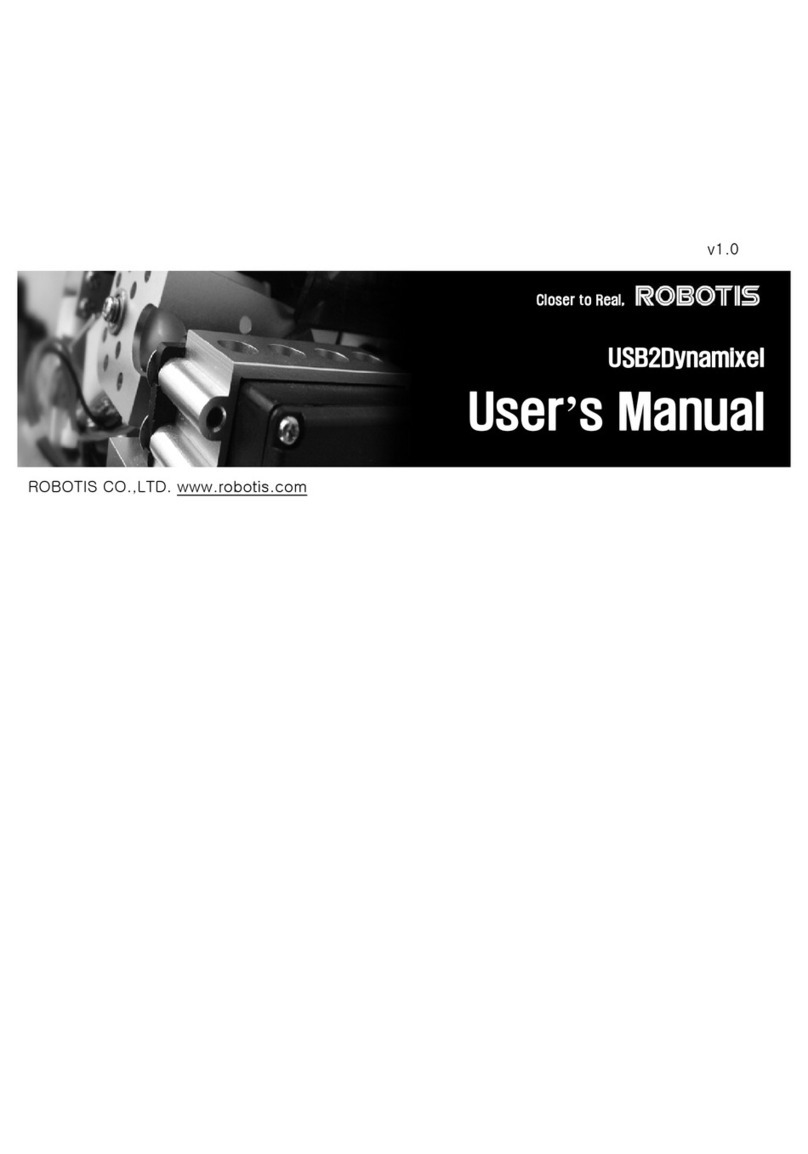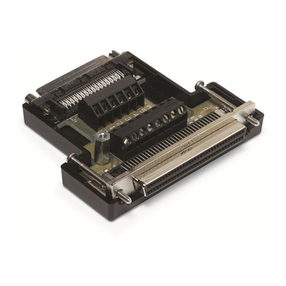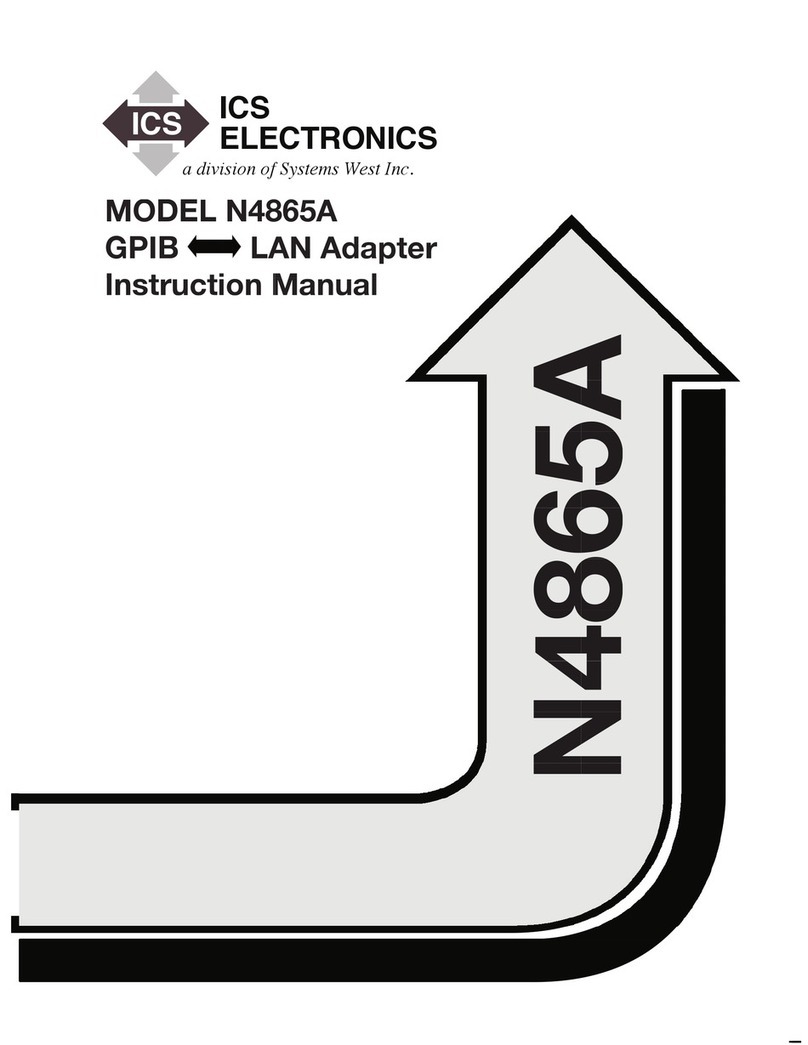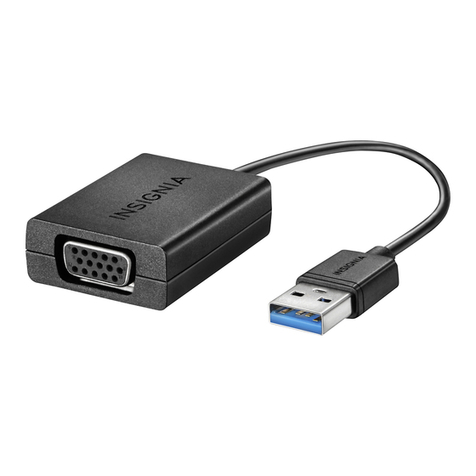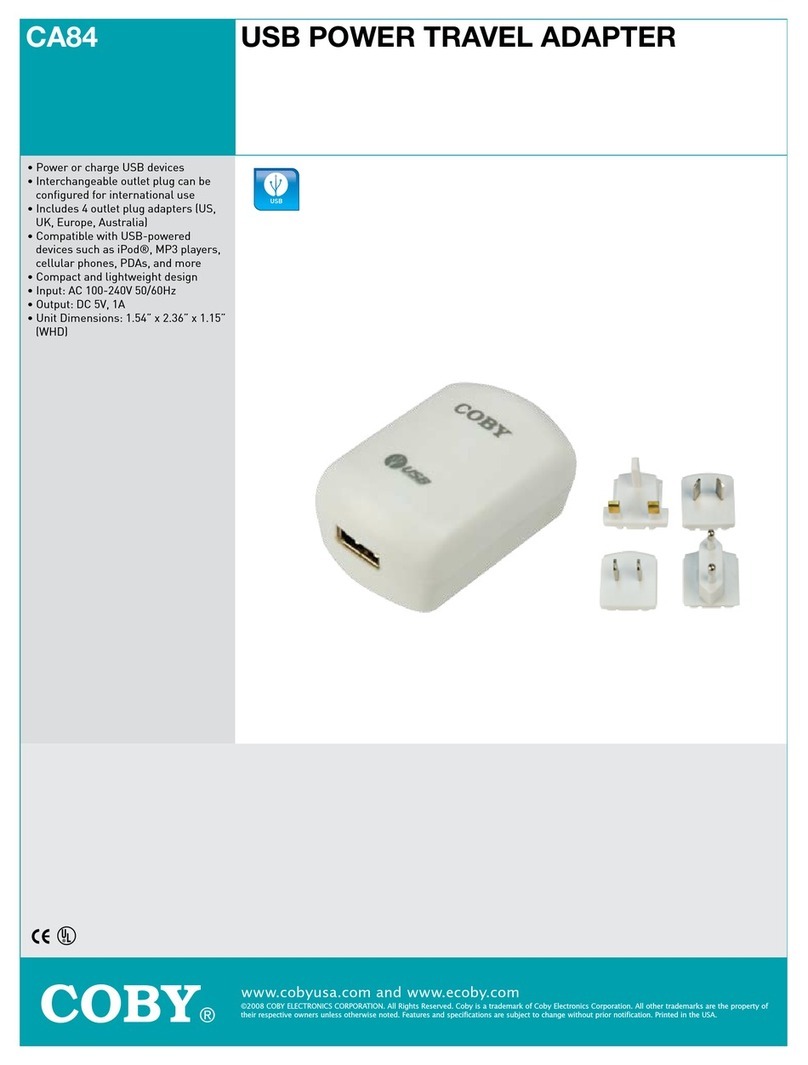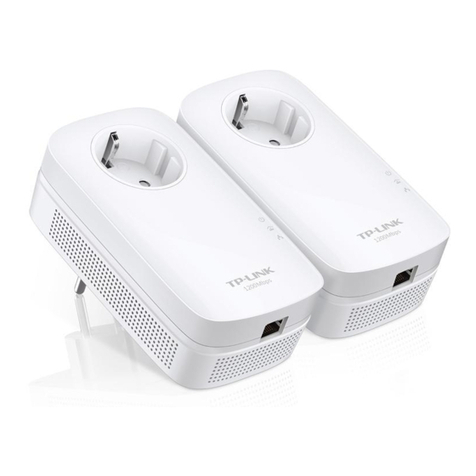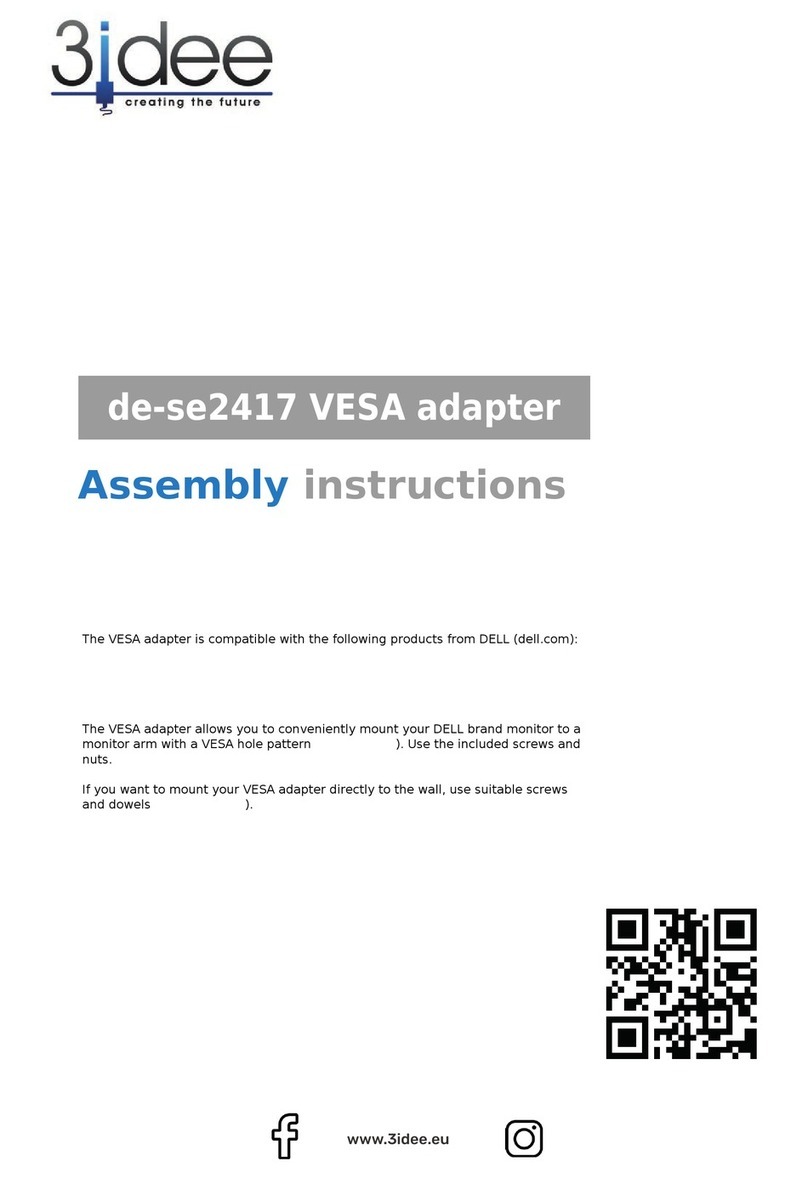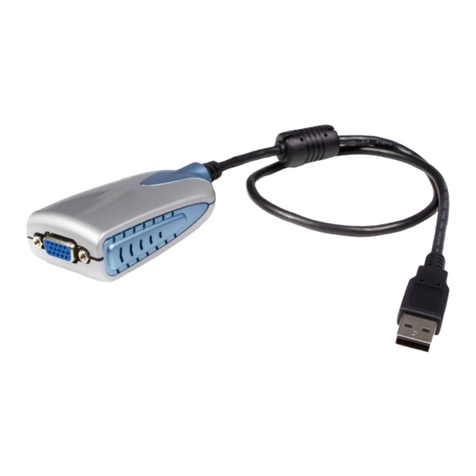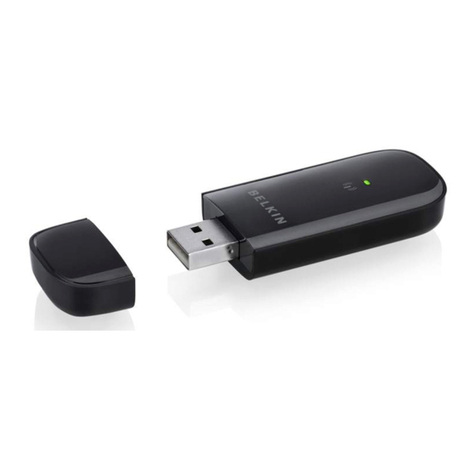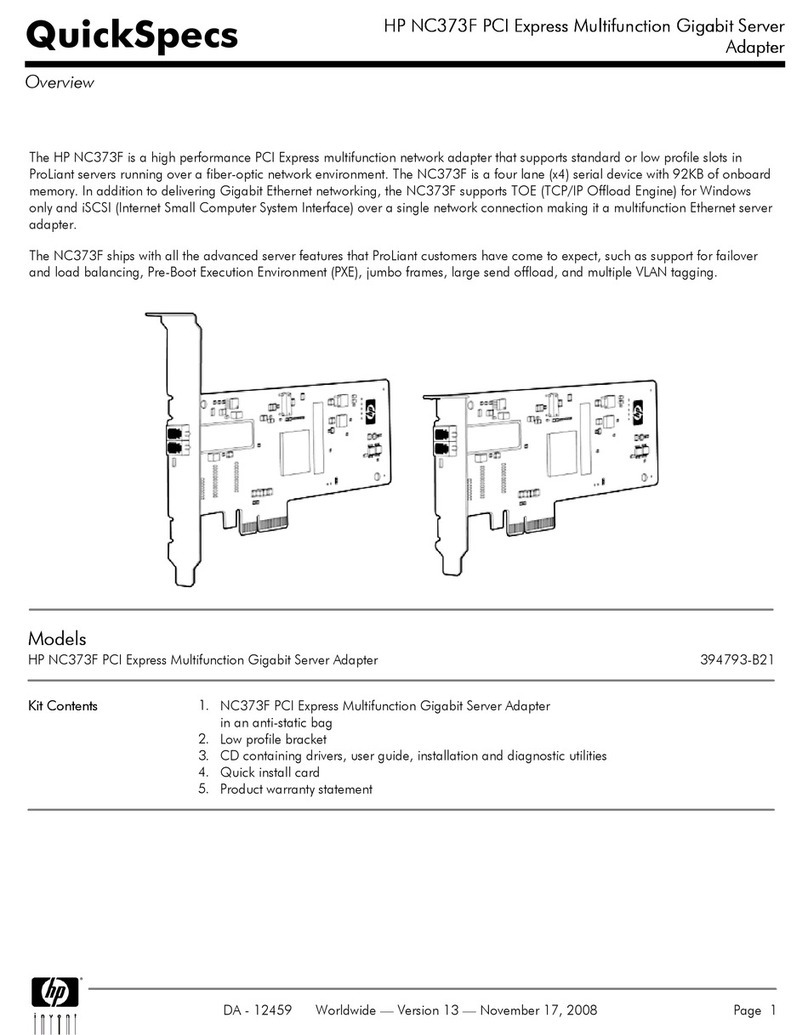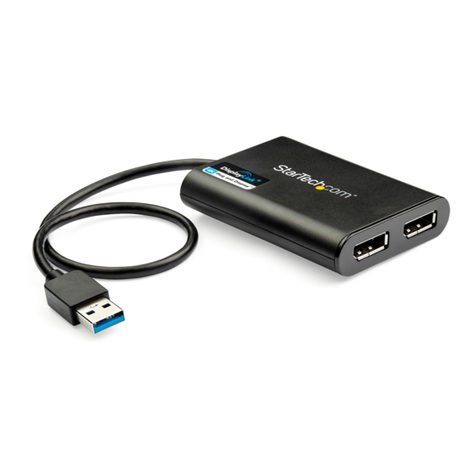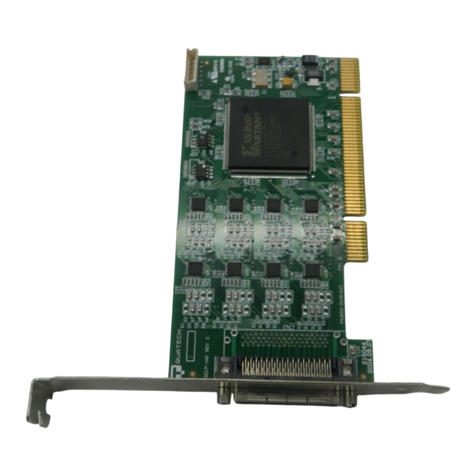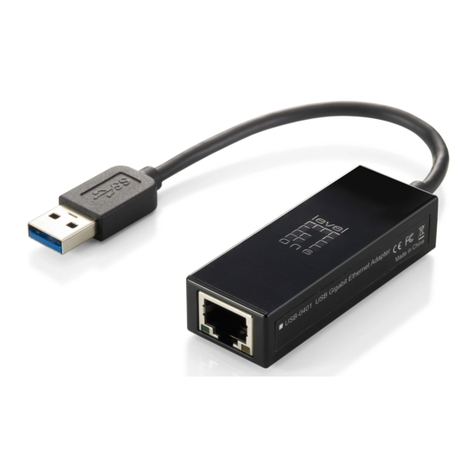Mylex 771002-D03 Operating instructions

LNE39OA/B
Ethernet LAN Adapter
Installation and Operation Guide
Revislon 3.0
P/N:
771002-DO3
lY15w

PREFACE
Thank you for your choice of a Mylex host adapter. With
proper
,installatbn
and care,
this
MyLex
product
will
operate for years
wlthout any sen&e requirement. This Installation and Operation Guide
will guide you In the
lnstalletion
process. The inform&on
conMned
herein
Is
suqect
to
ch&uQeJ
WkhoU
IuMce.
Mylex
Corporation
shall
nat
be
held
liable for
technical
or
editorial
omissions or errors made herein; nor for incidental or consequential
damages
re&dting
from the
furni8hin~,
performance,
or
use
of this
materM.
This
document contains proprietary information protected by copyright.
AH rights are
re8erved.
No part of this document may be
pho&opM
or reproduced by mechanical, electronic, or other means in any form
wlthout prior written
pemll84onal
Mylex
corporti.
IBM PC AT-,
IBM
PC
XT”,
md
DS/2”
are
rogktomd
trabmuka
d
Intomdonal
&Mom
Muhlnm,
Inc.
SCD”
In
l
roglDtuod
tmdunuk
d
ma
Santa
cruz
Dpudbn,
Inc.
UNIX”
h
aro@tormI
trdomuk
d
AT&T.
WIndowe”
ID
a
tradomwl~
of
Mlcrodt
Corpordkn.
80376m
k
l
tmdunuk
ot
Intol
Cqoratbn.
WDlOW’
tm
l
trdmuk
d
Wutrn
DigItal
Corpomtbn

FCC
NOl’lFlCATlON
This
device
has been tested and found to comply
within
the
limits
of a
Class 6device, pursuant to Part 15 of FCC regulations. Operation is
subject to the following two conditions:
1)
This devke may not cause harmful interference,
and
2)
This
device must accept any interference received,
including interference that may cause undesired
operation.
This equipment has been designed to provide reasonable protection
against harmful interference in a residential area This equipment
generates, uses and can radiate radio frequency energy. This device,
if not installed and used in accordance with the manufacturer’s instruc-
tions, may cause harmful interference to radio communications. There
is no guarantee, however, interference will not occur
in
a particular
installation. Should it be determined that this equipment is causing
interference to radio or
televtsion
reception, the following suggested
actions may be taken.
Reorient
or relocate the receiving antenna. Increase the distance
between the antenna and the computer. Plug the computer into a
different AC
outlet
so that the two conflicting devices are using a
different branch circuit. Contact the dealer that sold
this
equfpment
andlor
a reputable
radio/televtsfon
service
technician for additional
suggestkna.
C8ution:
Only equipment
certified
to comply with Class 6(computer Input/output
devices,
terminals,
printers, etc.) should be attached to this equipment,
and must have shielded interface cables.
Finalfy,
any changes or modifications to the equipment by the user not
expressly appproved by the grantee or manufacturer could void the
users authority to operate such equipment.

Table of Content
Chrpter
1: Introduction
Basic
Descriptbn
......................................... l-l
Theory
of
operation
......................................
l-3
scope
of
thls Document
...................................
l-4
Chapter 2: Hardware Installation and
Conflguration
Overview
................................................ 2-l
LAN
Media
Contiguratkm
for the
LNE39OA
....................
2-1
Adapter
lnstaUation
.......................................
2-2
EISA
Contiguration
Utilii
..................................
2-3
Media Type for the
LNE3908
...............................
2-4
Shared
SRAM
Address
....................................
2-5
lntemupl
Chokes
.........................................
2-6
Conclusion..
............................................
2-7
Chaptor
3:
Somare
Installation for NetWare
overview
...............................................
3-1
NetWare 3.11 Server Driver
................................
3-l
NetWare IPX Workstation Driver.
............................
3-4
NetWare
001
Wodcstation
Driver
............................
3-5
NetWare 266 Sewer Driver
.................................
3-7
Chapter 4:
Somare
lnstllation
for SC0 UNIX
overview . . . . . . . . . . . . . . . . . . . . . . . ..*.........*...........
4-l
Procedure
,.............................................
4-l
Chapter 5: Software Installation for ISC UNIX
Oven&w ...............................................
5-l
Procedure
...............................................
5-
1

T&b
of
Contents
LIVE390
USA
Ethrmt
IAN
Adq~tsr
Chapter 6: Software Installation for NDIS
Overview.. ............................................
..6- 1
Procedure
................................................
IANMAN
Implementation Notes
.............................
.6-a
Generic implementation Notes
..............................
.6-3
Appendix A: Testing the LNE390
Testing the
LNE39OA
.....................................
A-l
Testing the LNE3908
.....................................
A-2
Figures
Figure l-l: LNE390 Block Diagram
.
.
.
.
.
.
.
.
.
.
.
.
.
.
.
.
.
.
.
.
.
.
.
.
.
.
*l-2
Figure 2-l
:
Media Jumpers for LNE390A
.
.
.
.
.
.
.
.
.
.
.
.
.
.
.
.
.
.
.
.
.
.2-2
2Revision 3.0
Copyrlghf
0
1992

LNE390
EISA
Ethernd IAN
Adapter Introduction
Chapter
1:
-Introduction
Basic Description
The
Mylex
LNE390 series Ethernet Adapters provide a high
performance, cost-effective interface for EISA host systems to
any IEEE 802.3 compliant Local Area Network. There are two
products in the LNE390 series.
LNE39OA
__-_
._-
LNE3908
October 1989 1
OBas&
(‘Thick” Ethernet) or
lOBaae2
(“Thin’ Ethernet)
June 1992
lOBad
(“Thick” Ethernet) or
lOBaee2 (“Thin’ Ethernet) or
1OBaseT
CTwisted
Pair)
The
LNE3908
incorporates all the features of the
LNE39OA,
and adds support for Ethernet twisted pair (1
OBaseT).
Other features of the LNE series include:
32-bii
EISA bus interface
32KB shared SRAM memory
National Semiconductor
DP8390
Network Inter-
face Controller
Fully programmable settings -- no switch set-
tings or option jumpers on-board
Supports up to 4 LNE390 units in the same host
system
Cqyrlght 0
1002 Roviebn
3 0 1-l

lntroductbn LNE390 EGA
Ethemel
LAN
Adaptat
Host Bus Interface Logic
t
LNE&o
EISA
Bus
Flguro
l-l:
LNE390
Block
Olrqrm
1-2
RovlDkm
3.0
Copyright
Q1992

LNE390
EISA
Etherno
IAN Adapter
Introduction
Novell Certified Support for Novell Netware as
both server and workstation
SC0 UNIX Driver
ISC UNIX Driver
NDIS
Driver for OS/2 and DOS
Theory of Operation
The
LNE390
may be added to any
EISA
host system in any
availaMe
EISA
I/O
slot. One of the connectors on the back of
the unit is connected to an 802.3 compatible Local Area Net-
work. The LNE390 acts as a complete interface between the
software running of the host system and any other node on the
LAN. Figure l-1 shows a basic block diagram of the
LNE390.
The LNE390 off-loads most of the low-level LAN management
functions from the host system. These functions are per-
formed by the National Semiconductor
DP8390
NIC chip,
which runs under control of the software in the host system.
Each operating system supported by the
LNE390
is provided
with
a special driver which provides a software interface be-
tween the operating system and the LNE390. In the case of
DOS, the driver is loaded as a TSR (Terminate and Stay
Resident) program which is combined with a ‘Network Shell
that provides network services to the DOS user.
For Novell
Netware 3.1 x, the driver is loaded with a LOAD command after
the server system has been started. UNIX systems (both
SC0
and
ISC)
require the driver to be linked into the operating
system kernel before network services can be used.
The resources of the
EISA
host system used by the
LNE390
are:
1. A uniquely assigned Interrupt Request Line
(IRQ).
Copyright
Q
1992
Rwtskm 3
01-3

lntroductlon
LNE3SO
EEA
Ethwnot
LAN
Adaptor
2.
Sixteen bytes in
I/O
address space (EISA
slot
specific)
3. 64KB in memory address space, non-cached.
(Note that although the LNE390 provides
32KB of shared SRAM, 64KB memory
addresses are used by each board.)
The software driver communicates to the
LNE396
by loading
and storing data packets to and from the 32KB shared mem-
ory. The management and allocation of the shared memory
ls
under the control of the host program.
In the case of a transmission, the
driver
then uses
I/O
instruc-
tions to instruct the
DP8396
to send the data packet. The
DP8390
then runs
asynchronousfy
and will attempt to transmit
the packet up to 16 times. Upon completion or error, the
LNE390 then
lntem~pts
the host processor,
which
can then
read status
bits,
and then handle the resulting condition,
For data reception, the software driver programs the
DP8399,
indicating the appropriate buffer memory addresses for data
packet reception. When a data packet is received, the
’
LNE390
interrupts the host, and can then respond to the
received data packet.
Scope
of
This Document
The manual assumes the reader is familiar wlth normal ISA
and
EISA
style computer operating procedures, and
is
familiar
with the particular operating systems to be used. The proce-
dures detailed will enable the user to install the
LNE399
In any
EISA
host system with any of the supported operating sys-
tems.
l-4
Aovkton
3.0 CopyrIght
Q
1992

LNE390
EISA
Ethernet IAN Adwar
kWdwar0
Inatdatbn
md
Canftguratkm
Chapter 2: Hardware Installation and
Configuration
Overvlew
An
LNE390
may be installed in any available
EISA
I/O
slot in a host system. The bask steps for
hardware installation are:
1.
Install the adapter hardware in the system.
2.
Connect the adapters to the
LAN.
3.
Configure the
LNE390
using the host system’s
EISA
Configuration Utility.
This chapter
covers
these procedures.
To use the
LNE390
after the hardware Is in place,
tt
will be necessary to install the host operating sys-
tem and the appropriate
device
driver. For operat-
ing system installation, refer to the
documentation
that comes with the operating system software.
The installation of
LNE390
device
drivers is cov-
ered by subsequent chapters in this manual.
LAN
Media
Configuration for the
LNE39OA
Before the
LNE39OA
can be installed In a system,
it must be
configured
for the type of LAN you are
using. This is done by changing the settings of a
jumper block on the board, as shown in Fugure 2-1.
This operation is now required for the
LNE390B.
Copyright
0
1992
Awlrbn 3.0
2-l

~I-larrhvars
lrwldlatm
and Conhguretron
LNt390
EISA
Eiwlofm
LAN Adapter
.
The possible media selections are:
1
OBaseS
(lhich
Ethernet)
All pins in
JB4
set to
‘E’
position
.---I-
-_--
.-
~-
1
OBaseP
(Thin Ethernet) All pins in
JB4
set to ‘C’
position
Change the jumpers as appropriate. The factory
defautt
settings are for the
loBase
connector.
Adapter Installation
Referring to your host system’s documentation, re-
move the system cover and choose the slot to be
used by the LNE390. Remove any blank bracket
tab, saving the mounting screw.
Carefully insert the LNE390 into the slot, making
sure the edge connector property engages with the
slot.
~~____.____
1
I
l-l
rl
Flgure
2-l
:
Media
Jumperr
for
LNE390A
2-2
Rwh3lon
3.0 ---.
__.
CowrIght
0
1992

LNE390
EISA
Ethund
IAN Adaptor
Hmdware
Inata~
md
Comgutdkn
When the board is in place, the notch in
the
top of
the bracket should line up with the screw hole for
the mounting screw.
If it does not, check the
atign-
ment of the
LNE390
and the depth of the connector
insertion.
Complete the board installatbn by replacing the
mounting screw.
Replace the system cover as per
the manufacturer’s instructions.
As a
flnal
step, the LNE390 must be connected to
the network media.
For
1OBase
5, the 15 pin D-connector Is used to
connect a standard Ethernet transceiver unit to the
LNE390.
For 1
OBase
2, the BNC connector is used to attach
a BNC
‘T’
connector to the
LNE390.
The other two
poles on the
‘r
connector are attached to coaxial
cables which make up a Thin Ethernet lAN.
For
1OBaseT
(LNE39OB
onfy),
the
RJ45
modular
plug is used to connect the
LNE390
to a network
hub.
If the LNE390 is to be connected directly to
another
1OBaseT
Ethernet Adapter (such as an-
other
LNE39OB),
a special
cabte
that reverses the
signals is required.
EISA
Configuration Utility
Your
El!%
host system should be
provlded
with an
EIBA
Configuration Utilii diskette by the system’s
manufacturer. This program allows the user to
make all of the configuration settings on the
LNE390 board, as well as any other
EIBA
periph-
eral boards installed in the system, without having
to change physical switches and option jumpers,
CopyrIght
Q
1992
Revision 3.0
2-3

Hardware
ImtaUatbn
and
Con(iguratlon
lNE390
EtSA
Ethernet LAN Adapter
Note:
During the
configuration
procedure, it is
advisable to
make a manual note of the configura-
tion
options selected. This information will be re-
quired during the installation of various operating
system drivers described in the following chapters.
In order to perform this function, the
EISA
Configu-
ration Utility refers to a special data base file that
describes the
LNE390
and the possible options it
supports. This data base file (different for
LNE390A
and
LNE390B)
is contained on the
LNE390 Driver Diskettes
(DOS
format).
Refer to the host system’s documentation for in-
structions on how to start the
EISA
Configuration
Utility. These instructions also have instructions on
how to copy the configuration data base files to the
floppy diskette on which they will be used. As a
shortcut, however, it is possible to place the
LNE390
Driver Diskette in Drive B, and the
EISA
Configuration Utility diskette in
Drtve
A, and enter
the following DOS command:
COPY
B:\*.CFG
A:\
This will place all the available files on the Configu-
ration Utility Diskette, which will make them avail-
able for use when the program is run.
When the
LNE390
board(s) are recognized ‘by the
EGA
Configuration Utility, a configuration screen is
displayed. To configure the
LNE390
board, move
the cursor to the board to be configured and press
the ENTER key. You will be given several options
for the
LNE390
configuration.
Media
vpe
for the
LNE39OB
If an
LNE390B
board
IS
being installed. the
EISA
Configuration Utility will provide the option of
select-
2.4
Rews~on
3 0
Cqyrght
0
1992

LNE390
EISA
Ethernot
tAN
Adapta
t-tmrdwaro
Inrtahtton
nd
Cmftgur’W
ing the LAN Media type to be used on the board.
The
possibte
options are:
.
1
OBase5
-
Thick Ethernet
l
1 OBase2
-
Thin Ethernet
l
1
OBaseT
-
Twisted-Pair
Ethernet
Shared
SRAM
Address
The
LNE390
may be configured for any one of
seven memory addresses. The memory address
selected must be unique within the system, and not
used by any other device or by memory on the
motherboard. Also, the WE390 shared memory
locations should not be cached.
The available memory options are in the following
table. All numbers are byte addresses in hexadeci-
mal.
OFEOOOO
OF00000
FFFOOOO
-
._--.
FFCOOOO
OFFFFFF See
Note
Ul
below.
OFEFFFF See Note
I1
beLow.
OFDFFFF
LNE390A only
-
See Note
11
below
FFFFFFF
Very high memory, above
16MB,
eee
Note
#2
below
FFEFFFF
FFCFFFF
Very high memory, above
16MB,
BW
Note
12
below
--
Very high
memory,
above
16MB,
see
Nol~
tid
below
Capyrl9ht
63
1992 Revbbn 3.0
2-S

00Docbo
OODFFFF
Ueed
for DOS
Workhatiom, eee Note
#3
below
---~
________-.-__
WE0000
OOEFFFF
LNE390B
only
-
Ud
for
DOS Workdatiorm,
me
Notam
W3
and
1y4
below
Note
#l:
The
a&esses
that
hay8
th8
top
hvo
h8Xad8cimal
digits as ‘OF’
kxate
the LIVE390
wlthin the
tirst
16MB
of
physkzal
memory
a&8ss
space.
If your system board has
16AtlB
of
memory
or more, using
these
options will
caus8
a
contlict
which will
CBUS~
th8
installation to
lose
the us8 of
som8
memory
unn8cesarily
D8tmnding
on which
make of EISA host system
is
used, the
El%
Con-
figuration Utility may
not
b8
able
t0
delecl
and
report this
condition.
For systems with
16MB
or
more
of physical
memory,
these
Bwresses are not
to be used.
Note
#2:
Some systems. notably the Compaq
and
AST
EM
systems in addition to
Others,
have an
option (controlled by the
E/S4
Configuration Utility)
that limits
memory
addressing
abOv8
16MB.
This
option must
b8
disabled for
th8
LNE390 to be used
at any Of
th8
l/81y
High’
memory
addresses.
Fail-
ing to do so with result in Novell NetWare ABEND
when a driver startup is attempted.
Note
U3:
Address
DOOO~OOO
will
hay8
to be used
by DOS workstations.
Not8 #4: On some motherboards EOOO may not
work properly
Interrupt Choices
The LNE390 can be used on any one of eight
IRCl
lines. Any interrupt may be used as long as it does
2-6
Revision
3.0
Copyright
0
1992

LNE3QO
USA Ethernet UN
Adwtu
tiudwaro
Intialldkn
md
Cun?tguiatbr.
not conflict with any other device in the system.
The
LNE390
does not support shared interrupts.
The various supported interrupts are
3,5,7,9,
A,
6,
C, and F.
Conclusion
Once the
configuration
optlons
have been selected,
the
EISA
Configuration
Utility
can be instructed to
save the configuration data. Each time the system
is powered on or reset, the
LNE390
board will be
re-programmed as part of the standard
EISA
power-up sequence.
After this procedure has been completed, refer to
one of the following chapters for installation of the
appropriate software driver.
Copyright
Q
1992
Aevvlebn
3.0 2-7

UUE390
EISA
Ethmel
LAN
Adapt61
Sottware
Intallatbn
for
Ware
chapter 3: Software Installation for
NetWare
Overvlew
Included with the
LNE390
is a software driver
(LNE31.tAN)
for Novell NetWare
V3.xx
(also re-
ferred to as NetWare 386). In addition, the
LNE390
provides
both IPX
and
ODI
(LNE.COM)
workstation
drivers for
DOS.
These software modules are
found on the
LNE390
Driver Diskette
(DOS
format).
This chapter provides the procedures for using
these drivers. It is assumed that the reader is
familiar
wtth
installing the Novell NetWare system
and has already done so.
NetWare 3.11 Server
Driver
The LNE390 NetWare Driver is the file named
LNE31LAN
on the
LNE390
Driver Diskette root
directory. To use this driver it is necessary to copy
this file to the DOS Disk Directory from which Net-
Ware is started. If the installation starts NetWare
from a diskette, the LNE31 .lAN file should be cop-
ied to that diskette.
Load the
LNE390
Server Driver
at the
[:]
prompt as follows:
:LOAD
LNE31
NAME=cnrme>
SLOT=dob
FRAME=<frwwtype>
BIND
IPX
<name>
NET=dwb
CopyrIght
Q1992
Rwbbn
3 0
3-1

!3itwan
IMtn~knl
for
Notwum
UUE390
EEA
Ethmrnet
UN
Maptar
For example, if
NOWU
NetWare
is
installed on hard
disk drive ‘C’ in directory SERVER, and the
LNE390
Driver
Diskette is loaded into floppy disk
drive ‘A’, the following commands may be used to
load the LNE390 Netware 3.1 x Server driver on the
diskette at
me
DOS prompt.
c:
CD
\SERVER
.
COPY A:
\*.LAN
Once this has been done, the
NetWare
server may
be started by entering the command
SERVER
In order for the
LNE399
driver(s) to become
active
and usable by the NetWare server, it is necessary
for the server to execute a ‘LOAD’ command.
There will be one LOAD command for each
LNE390
operating on a unique frame type, being
supported by the network. In addition, each board
installed in the system will require one BIND com-
mand to tie a NetWare
senrice
into the
speciftc
rendition of the
ddver.
The syntax
of,the
LOAD/BIND command to execute
the
LNE399
driver
is shown above.
The
variable
symbols are described in the following table.
3-2
Revidon
3.0
CopyriQht
Q1992

LNE390
EISA
Ethernet IAN Adapter
SoHwtware
Insblletion for NetWare
--
.%__A
_...-
S~MSOL-
,,_.._.Y....‘.-UI,IL
__._.
‘m_._-T.
.
.._.
‘e..I.....L..IIPLIY
SlmmTuTE
WITH
_____._____
_..___
_.__
__..._lllll-.-ll-l
_
.-_..
._._._.-
-_-.
<name>
An arbitrary name assigned to
the LNE39O/Frame type
combination. Note that this
eymbol appears both in the
LOAD and the BIND
commande, and tiee them
together.
-.-
-__---
-
-.-
---
cslob
--
..-----
-.--
<frame type>
The
ElSA
slot number of the
board.
_~___
-.
_
-.
___
__~_
The frame type to be supported
by this copy of the driver.
-
<net>
An IPX network identifier
number assigned to the
Ethernet segment being
serviced. Note that this
symbol must be the same as
other NetWare servers on the
same segment.
.>
yI--*---_--
-
~
--.
.
-s
For a more complete description of the
NetWare LOAD and BIND commands (such
as different possible frame types), refer to the
NetWare documentation.
LOAD and BIND commands are normally
located within the AUTOEXEC.NCF file that
the NetWare server executes each time it IS
started. This file may be edited from within the
server by executing the INSTALL program
provided with NetWare (started with a LOAD
INSTALL) command.
Alternatively. the LOAD and BIND commands
may also be typed in at the “dot prompt”, as a
manual command This method is normally
used in experimental servers where the
configuration changes frequently, or when
debugging a network.
CopyrIght
0
1992
Rwwon
3 0 3-3

softwam
Installrtlon
for
Netwan
INi
EGA
Ethomot
IAN
Adopter
As an example, the commands shown
bti
might be used in an installation with three
network adapters, each network adapter
supporting two different frame types. After the
LNE390
driver is loaded, the server will be
ready to respond to requests on the network.
LOAD
LNEJI NAME.FO SLOT=2
FWE=ETHERNET_II
LQAD
LNE31
NAME.Pl
SLOT=2 FfUME=ETHEANET_802.3
LOAD LNEJI NAME@2 SLOTIS
FRAME=ETHERNET_II
LOAD LNE31
NAME&J
SLOTIS FRAME.ETHERNET_802.3
LCMD
LNE31
NAME=PI SLOT.7 FFWME.ETHERNET_II
LOAD
LNE31
NAME.P!i SLOT=7 FRAME-ETHERNET_8023
BIND IPX
W
NET=&
BIND IPX PI NETsAl
BIND IPX
PZ
NET.&?
BIND IPX
P3
NETxA3
BIND IPX P4
NET-M
BIND IPX
PS
NET=M
NetWare IPX Workstation Driver
One method of integrating a DOS workstation
into a Novell NetWare LAN is by using the
IPX
network interface program. The IPX program
is created by the user by combining an
.0&I
file provided with the
LNE390
board with me
skeleton IPX file provided by Novell. The
combining process is performed by the Novell
supplied
WSC3EN
program.
WGEN
also modifies the
IPX.COM
that it
generates to tailor it for the configuration of
the
LNE390
board to be used. This
IPX.COM
file may be used with any
LNE3W
that uses
the same memory address and
IRQ
line.
34
ROVhbll30
CowrlghtQ
1992
Table of contents

